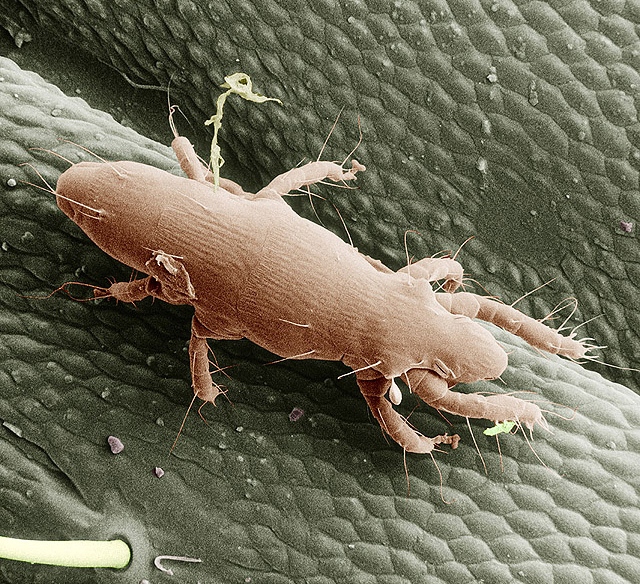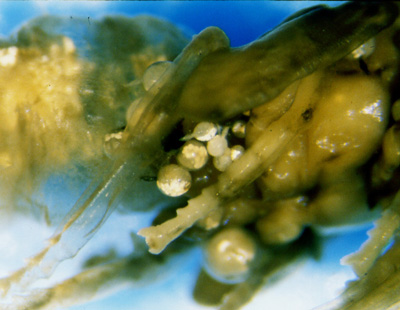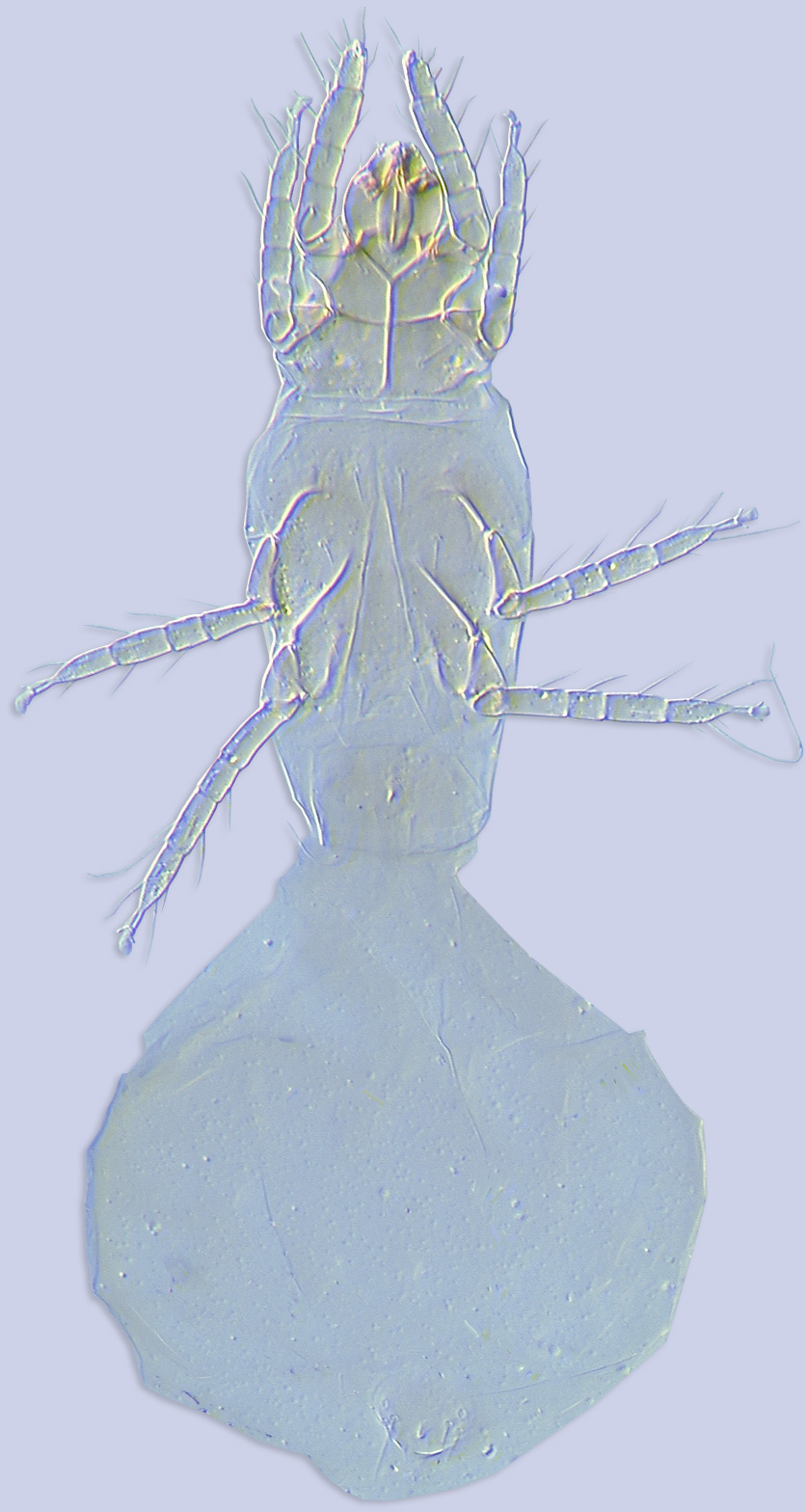
Fig. 1. Pyemotes tritici (Lagrèze-Fossat and Montané, 1851). Photograph by Eric Erbe; digital colorization by Chris Pooley. Identification by Ronald Ochoa. Click to enlarge
 Fig. 1. Pyemotes tritici (Lagrèze-Fossat and Montané, 1851). Photograph by Eric Erbe; digital colorization by Chris Pooley. Identification by Ronald Ochoa. Click to enlarge |
|
males* | |||
| 1 | Hysterosomal setae c2 large, similar to d or e in size. Setae ip vestigial. Third prodorsal setae approximately twice as long as second prodorsal setae. On larvae of Anobiidae, Curculionidae, Buprestidae, Scolytidae, and Lyctidae (Coleoptera), vespid and sphecid wasps; laboratory colonies of megachilid bees. Holarctic
| | |
| - | Hysterosomal setae c2 distinctly smaller than d or e. Length of third and second prodorsal setae variable. | ||
| 2(1) | Setae c of femur IV short and slender, rarely reaching tip of tarsus IV, less than half as long as opisthosomal setae d and e. Third prodorsal setae not exceeding length of second prodorsal setae. Setae ip vestigial. On larvae of Anobiidae, Curculionidae, Buprestidae, Scolytidae (Coleoptera); colony of Apis mellifera. Holarctic
| | |
| - | Setae c of femur IV long and stout, extending at least to, and usually beyond tarsus IV, more than half as long as opisthosomal setae d and e. Third prodorsal setae approximately twice as long as second prodorsal setae. Setae ip filiform, nearly as long as ax2. Nests of Hoplitis (Megachilidae) in Colorado
| | |
 Pyemotes tritici |  mites on bee |  Pyemotes sp |